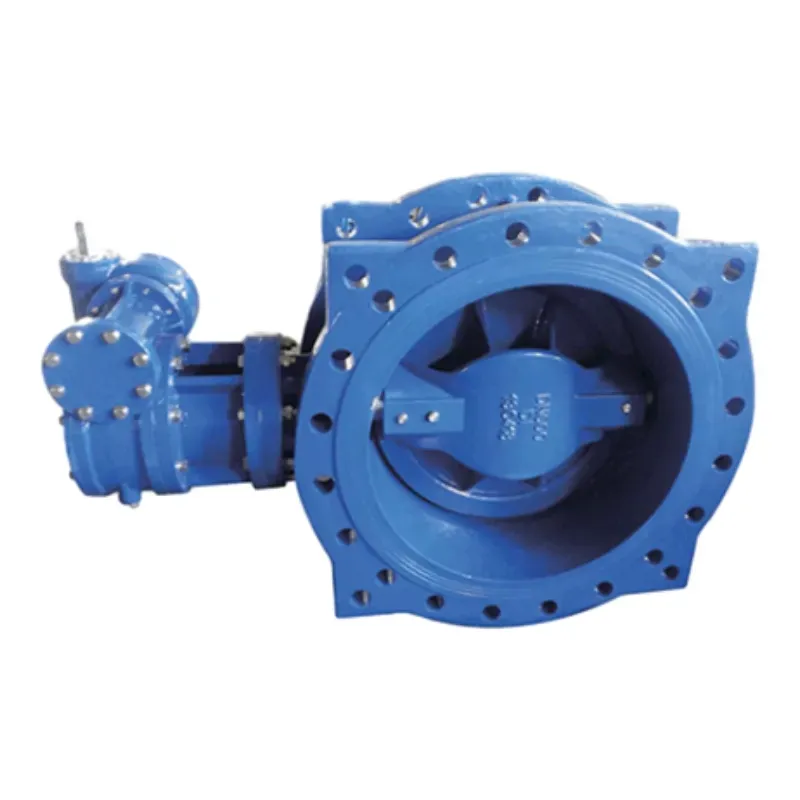Ноя . 09, 2024 23:40 Back to list
Wafer Type Butterfly Valve Features and Applications in Industrial Settings
Understanding Wafer Butterfly Valves Types and Applications
Butterfly valves are an essential component in various industrial applications, designed to regulate the flow of liquids and gases. Among the different designs of butterfly valves, the wafer type is particularly noteworthy due to its unique features and advantages. This article explores the significance of wafer butterfly valves, detailing their structure, types, applications, and benefits.
What is a Wafer Butterfly Valve?
A wafer butterfly valve is a type of quarter-turn valve that allows or blocks the flow of fluid through a pipeline by rotating a disc. Unlike flanged valves, wafer valves have a compact design, allowing them to fit between two flanges in a piping system without the need for additional mounting hardware. This feature minimizes the space required for installation, making wafer butterfly valves an excellent choice for applications where space is limited.
Structure of Wafer Butterfly Valves
The primary components of a wafer butterfly valve include the valve body, disc, stem, seat, and actuator.
1. Valve Body Typically made from durable materials such as cast iron, stainless steel, or plastic, the body provides the structural integrity needed to withstand pressure and temperature variations.
2. Disc The disc rotates to control the flow. When the disc is parallel to the flow, the valve is fully open, and when it is perpendicular, the flow is blocked.
3. Stem The stem connects the disc to the actuator. It is responsible for transmitting the rotational motion that opens or closes the valve.
4. Seat The seat material must provide a reliable seal to prevent leakage. Materials may vary from rubber to PTFE, depending on the application's temperature and chemical requirements.
5. Actuator Wafer butterfly valves can be operated manually using a handle or automated with pneumatic, hydraulic, or electric actuators for ease of operation.
Types of Wafer Butterfly Valves
Wafer butterfly valves come in various designs to cater to different needs, including
1. Standard Wafer Butterfly Valve The most common type, suitable for general services. They are reliable and cost-effective, making them widely used in water and wastewater treatment.
3. Cryogenic Wafer Butterfly Valve Specifically designed for low-temperature applications, such as liquefied natural gas (LNG) services, these valves can handle extreme conditions without compromising safety or function.
wafer type butterfly valve

4. Electric Wafer Butterfly Valve Fitted with an electric actuator, this type provides automation capabilities, making it ideal for remote operations where manual operation is impractical.
Applications of Wafer Butterfly Valves
Wafer butterfly valves have a wide range of applications due to their versatility. Common industries that utilize these valves include
- Water Supply and Wastewater Treatment They assist in flow control and isolation in water treatment plants and piping systems.
- Oil and Gas In the petroleum industry, wafer butterfly valves are employed in various processes, including refining, transportation, and distribution.
- Chemical Processing They effectively control flow in chemical supply lines, where resistance to corrosive substances is essential.
- HVAC Systems In heating, ventilation, and air conditioning systems, they regulate airflow and are integral in maintaining environmental control.
Benefits of Wafer Butterfly Valves
The advantages of wafer butterfly valves over other types include
- Space Efficiency Their compact design allows for installation in tight spaces.
- Low Maintenance With fewer moving parts than other valve types, wafer butterfly valves generally require less maintenance.
- Cost-effectiveness They offer a reliable sealing mechanism at a lower manufacturing cost, making them an economical choice.
- Versatile Operation The availability of various actuator types allows for both manual and automated control.
Conclusion
Wafer butterfly valves are integral to many industrial applications due to their compact design and reliability. With diverse types tailored for specific services, they offer substantial benefits in terms of efficiency, cost, and functionality. Understanding their design and applications is crucial for engineers and operators who aim to select the right component for optimal system performance. As industries continue to evolve, wafer butterfly valves will remain a pivotal element in fluid control systems.
Share
-
Reliable Wafer Type Butterfly Valves for Every IndustryNewsJul.25,2025
-
Reliable Flow Control Begins with the Right Ball Check ValveNewsJul.25,2025
-
Precision Flow Control Starts with Quality ValvesNewsJul.25,2025
-
Industrial Flow Control ReliabilityNewsJul.25,2025
-
Engineered for Efficiency Gate Valves That Power Industrial PerformanceNewsJul.25,2025
-
Empowering Infrastructure Through Quality ManufacturingNewsJul.25,2025